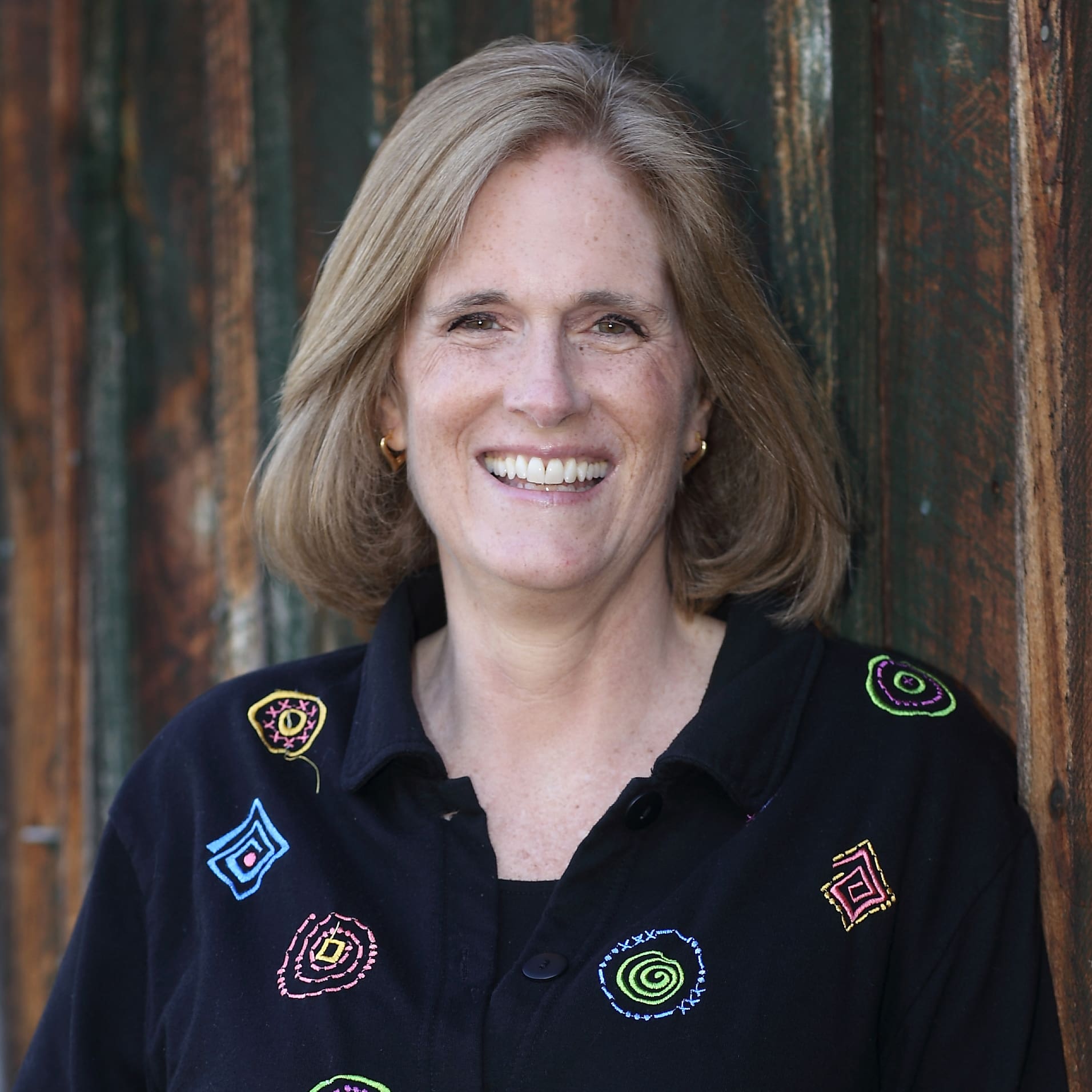Learning from the Brothers Grimm
Jake and Wil save German culture
n
The u201cLittle Corporalu201d was ruining everything. Napoleon Bonaparte abolished the feudal system; peasants duties to the manorial class were reduced or eliminated. u00a0The lingua franca, or traderu2019s tongue, that was a combination of Italian French and Spanish words suddenly had more French and was replacing High German u2013 and not just with the confused folk of Alsace.
n
The Emperor decreed that all must ride horses or drive carriages on the right side of the road, which made defending yourself with a saber awkward. But the absolute worst thing was that good German folk tales were told less often at children bedtime!.
n
Times under the Korsisch (Corsican) were yet another trial for Jacob and Wilhelm Grimm of Hanau,u00a0 In 1796, their father died at forty-four when Jacob, the eldest, was eleven. His father was the sole breadwinner. There were ten children in the Grimm family and Jacob was head of household and had to help support his mother and his siblings. He and his brother Wilhelm were bookish, worked hard at school and were accepted at the prestigious Lyceum high school. They went to university, Jacob took time off to fight Napoleon before getting his law degree. Wilhelm studied German literature.
n
The Brothers Grimm were broke. They were always looking to make a little Money to help u201ckeep the wolf from the door,u201d so to speak. Today young men might start a YouTube channel, become TikTok influencers, or write a monetized blog.
n
In 1808 after their mother died they hit on a plan to publish historical German folklore and in 1812 the first edition of Kinder und Hausmu00e3rchen (Childrenu2019s and Household Tales), what we know today as Grimmu2019s Fairy Tales.
n
Jake and Wil talked about the higher purpose of saving German culture; enough that it is in the lore surrounding the book. Perhaps it was their u201celevator pitchu201d as they traveled the countryside interviewing grossmutters und hausfraus (grandmothers and housewives).
n
Despite my wisecracks, Jacob and Wilhelm Grimm were first-rate academic researchers. They documented sources and the evolution of these stories over time. The two volume collection is of significant historical importance in the fields of literature and folklore and has encouraged and enabled further research in the time since its publication. It also happened to make the brothers some money, which they sorely needed.
n
Und so? (Yeah . . . and?)
n
In my quest for u201cWisdom from Unusual Places,u201d I decided to read Grimmu2019s Fairy Tales to see what I might learn. I didnu2019t read the whole two volume set. I read the Dover Thrift Edition pictured above, forty-three stories translated and published in 2007 about the same time Google Books put a translation and the original online.
n
Volume one has ninety stories; volume two has one hundred fifteen stories, and ten legends. There are forty-four other stories, the Grimms researched and documented, but never published. Many stories are other versions of the forty-three I read, but some are completely different. I read the short version, but still I learned some stuff.
n
The Folklore Industry
n
Probably people have been telling stories to children since before fire was discovered. I wrote earlier in the blog about Aesop whose fables were first recorded in the sixth century BCE. Some of the folktales in Indian culture date to the third or fourth millennium BCE. Tacitus, the roman historian in the first century CE used such stories to determine the character of a people. Jordanes, the sixth century Gothic historian created the divined the history of the Huns from their mythology and folklore, though the academic value of accounts of magical women cohabiting with forest fauns is suspect.
n
The Grimms collected these stories to demonstrate their Teutonic roots, u201cTake that Napoleon!u201d. I find it extremely ironic that some of the same stories were collected by Charles Perrault, of Lu2019Acadu00e9mie Franu00e7aise to venerate French culture. u201cCinderellau201d is in both books. The Little Reed Cap (Rotcu00e4ppchen) that we know as u201cLittle Red Riding Hoodu201d is in Perrault as u201cLe Chapperon Rouge;u201d
n
Some turned these stories into Entertainment as Walt Disney did in the twentieth century, (Snow White, Cinderella, Sleeping Beauty).In my house growing up there was a 19320s book of Grimmu2019s Fairy Tales in English that was pre- Disney and Golden Books and less gruesome than what I just read, but not as sanitized as the Disneyfied versions.
n
Settings and Architypes
n
The stories I read in Grimm are all set in medieval times, a time of local feudal kings with the advantages royalty brings. It was also the time of the Growth of towns and villages and a burgeoning middle class of tradesmen and shopkeepers. So the tales are full of tailors, millers, bakers, furniture makers, shoemakers etc. Farmers are often met going to the town market with a fat animal to sell. Master tradesmen have unruly apprentices, who after apprenticeship are sent on their Wanderjahr (wander-year) to perfect their skills in neighboring villages (Journeymen) until they can produce their u201cmaster -piece.u201d
n
Children, whether of nobility, tradesmen or peasant, had certain traits by birth order. The eldest was often responsible, sometimes haughty and entitled. The youngest was often ignored and so became resourceful. Middle children often u201cpairedu201d with the eldest against the young kid.
n
Gender architypes? Well the most obvious thing is that women are regarded poorly in these stories. Hu00e4nsel and Grethelu2019s mother browbeats the kindly old woodcutter into abandoning their children in the woods and when resourceful Hansel leads them home by dropping white stones from the path, she locks the door so he canu2019t gather stones and must useu00a0 breadcrumbs.
n
Women are witches, evil stepmothers, uber-vain queens (u201cLooking glass, Looking glass on the wall, whou2019 in the land is the fairest of all?u201d). The wife u00a0simply must have some rampion lettuce (Rapunzel) from the sorceressu2019s garden and so sendu2019s her husband over the wall and then must give her firstborn daughter away. They are never satisfied like the poor fishermanu2019s wife who demands he ask more and more from the magic flounder until unhappy with the castle she ends them back in the hovel.,
n
Step parentsu00a0 (especially step mothers) spoil their own offspring and are never nice to step children, (u201cCinderella,u201d u201cThe Three Little Men in the Wood,u201d u201cBrother and Sisteru201d). Beautiful daughters can be sweet (Snow White and Rose Red) or conceited and demanding, (u201cKing Thrushbeardu201d). Sons are either lazy good-for-nothings or resourceful (u201cThe Knapsack, the Hat and the Hornu201d).
n
Rich men, kings, innkeepers, or robbers )are often greedy. Little people are magical, elves who make the shoemakeru2019s and dwarves,. The ugly and disabled are too often bad (Rumpelstiltskin, the witch in Hu00e4nsel and Grethel).
n
Wrong-doers are punished in a medieval way, putting on red-hot iron shoes or be pushed down a hill in a barrel with nails sticking inside. The Grimms took their name seriously.
n
These tales have entered language, culture and what the Germans call the Zeitgeist, u2018following breadcrumbs,u201d u201cwolf in sheepu2019s clothing,u201d u201cNeedle in a haystack.u201d
n
Good Sense in Fairy Tales
n
First, there are no fairies in the Grimm collection I read. Cinderella gets her pretty ballgowns from a little white bird who sings in the hazel treen that grew from Cinderellau2019s motheru2019s grave, not some dragonfly-winged tiny grandmother spreading Disney-glitter. Still there is plenty of magic. The tales present a balanced view of the world, which might teach us today as they were intended to teach children of the medieval times.
n
Lesson number 1. The world is a dangerous place. u00a0There are evil-doers everywhere, wolves in goatu2019s clothing, robbers, greedy-guts landlords and evil sorceresses who can curse you to Sleep for a hundred years.. Even your siblings will sometimes do you dirt.
n
Lesson number 2. Magic abounds in the world if you know where to look. Elves can help you u00a0make shoes u201cmoney while you sleep,u201d Little men in the wood can find you strawberries in winter. Talking frogs and bears can become princes. Brothers changed to ravens and swans can be returned to their human state by the love of a siter who completes a magical quest.
n
Lesson number 3. Donu2019t boast and keep your word. The milleru2019s daughter has to spin straw into gold (a brag from flax spinning into pricey linen thread0. The princess who goes back on her word to the frog to sleep with him. Many problems arise from a lack of humility and integrity.
n
Lesson number 4. Be kind to animals and the less fortunate. u00a0Most Germanic tribes like the Celts are Indo-Europeans, peoples who migrated from India, so perhaps it shouldnu2019t be surprising that karma reigns. What goes around comes around as animals and beggars save Simpleton in u201cThe Queen Beeu201d, and Dummling in u201cThe Golden Gooseu201d and u201cThe Little Peasantu201d ends up as the richest man in the village, (because everyone else kills themselves for greed).
n
Lesson number 5. With a little pluck you can make your own luck. u00a0The Valiant Little Tailor transforms the confidence derived from u201ckilled seven with one blow,u201d (flies no less) into a meteoric rise to royalty. The Bremen Musicians band together and drive off the robbers.
n
Some will like the Disneyfied versions of these tales because they are less gruesome, but even in the originals love conquers all; princess and prince and miller and his bride live happily ever after.
“,”tablet”:”
Jake and Wil save German culture
n
The u201cLittle Corporalu201d was ruining everything. Napoleon Bonaparte abolished the feudal system; peasants duties to the manorial class were reduced or eliminated. The lingua franca, or traderu2019s tongue, that was a combination of Italian French and Spanish words suddenly had more French and was replacing High German u2013 and not just with the confused folk of Alsace.
n
The Emperor decreed that all must ride horses or drive carriages on the right side of the road, which made defending yourself with a saber awkward. But the absolute worst thing was that good German folk tales were told less often at children bedtime!.
n
Times under the Korsisch (Corsican) were yet another trial for Jacob and Wilhelm Grimm of Hanau, In 1796, their father died at forty-four when Jacob, the eldest, was eleven. His father was the sole breadwinner. There were ten children in the Grimm family and Jacob was head of household and had to help support his mother and his siblings. He and his brother Wilhelm were bookish, worked hard at school and were accepted at the prestigious Lyceum high school. They went to university, Jacob took time off to fight Napoleon before getting his law degree. Wilhelm studied German literature.
n
The Brothers Grimm were broke. They were always looking to make a little money to help u201ckeep the wolf from the door,u201d so to speak. Today young men might start a YouTube channel, become TikTok influencers, or write a monetized blog.
n
In 1808 after their mother died they hit on a plan to publish historical German folklore and in 1812 the first edition of Kinder und Hausmu00e3rchen (Childrenu2019s and Household Tales), what we know today as Grimmu2019s Fairy Tales.
n
Jake and Wil talked about the higher purpose of saving German culture; enough that it is in the lore surrounding the book. Perhaps it was their u201celevator pitchu201d as they traveled the countryside interviewing grossmutters und hausfraus (grandmothers and housewives).
n
Despite my wisecracks, Jacob and Wilhelm Grimm were first-rate academic researchers. They documented sources and the evolution of these stories over time. The two volume collection is of significant historical importance in the fields of literature and folklore and has encouraged and enabled further research in the time since its publication. It also happened to make the brothers some money, which they sorely needed.
n
Und so? (Yeah . . . and?)
n
In my quest for u201cWisdom from Unusual Places,u201d I decided to read Grimmu2019s Fairy Tales to see what I might learn. I didnu2019t read the whole two volume set. I read the Dover Thrift Edition pictured above, forty-three stories translated and published in 2007 about the same time Google Books put a translation and the original online.
n
Volume one has ninety stories; volume two has one hundred fifteen stories, and ten legends. There are forty-four other stories, the Grimms researched and documented, but never published. Many stories are other versions of the forty-three I read, but some are completely different. I read the short version, but still I learned some stuff.
n
The Folklore Industry
n
Probably people have been telling stories to children since before fire was discovered. I wrote earlier in the blog about Aesop whose fables were first recorded in the sixth century BCE. Some of the folktales in Indian culture date to the third or fourth millennium BCE. Tacitus, the roman historian in the first century CE used such stories to determine the character of a people. Jordanes, the sixth century Gothic historian created the divined the history of the Huns from their mythology and folklore, though the academic value of accounts of magical women cohabiting with forest fauns is suspect.
n
The Grimms collected these stories to demonstrate their Teutonic roots, u201cTake that Napoleon!u201d. I find it extremely ironic that some of the same stories were collected by Charles Perrault, of Lu2019Acadu00e9mie Franu00e7aise to venerate French culture. u201cCinderellau201d is in both books. The Little Reed Cap (Rotcu00e4ppchen) that we know as u201cLittle Red Riding Hoodu201d is in Perrault as u201cLe Chapperon Rouge;u201d
n
Some turned these stories into entertainment as Walt Disney did in the twentieth century, (Snow White, Cinderella, Sleeping Beauty).In my house growing up there was a 19320s book of Grimmu2019s Fairy Tales in English that was pre- Disney and Golden Books and less gruesome than what I just read, but not as sanitized as the Disneyfied versions.
n
Settings and Architypes
n
The stories I read in Grimm are all set in medieval times, a time of local feudal kings with the advantages royalty brings. It was also the time of the growth of towns and villages and a burgeoning middle class of tradesmen and shopkeepers. So the tales are full of tailors, millers, bakers, furniture makers, shoemakers etc. Farmers are often met going to the town market with a fat animal to sell. Master tradesmen have unruly apprentices, who after apprenticeship are sent on their Wanderjahr (wander-year) to perfect their skills in neighboring villages (Journeymen) until they can produce their u201cmaster -piece.u201d
n
Children, whether of nobility, tradesmen or peasant, had certain traits by birth order. The eldest was often responsible, sometimes haughty and entitled. The youngest was often ignored and so became resourceful. Middle children often u201cpairedu201d with the eldest against the young kid.
n
Gender architypes? Well the most obvious thing is that women are regarded poorly in these stories. Hu00e4nsel and Grethelu2019s mother browbeats the kindly old woodcutter into abandoning their children in the woods and when resourceful Hansel leads them home by dropping white stones from the path, she locks the door so he canu2019t gather stones and must use breadcrumbs.
n
Women are witches, evil stepmothers, uber-vain queens (u201cLooking glass, Looking glass on the wall, whou2019 in the land is the fairest of all?u201d). The wife simply must have some rampion lettuce (Rapunzel) from the sorceressu2019s garden and so sendu2019s her husband over the wall and then must give her firstborn daughter away. They are never satisfied like the poor fishermanu2019s wife who demands he ask more and more from the magic flounder until unhappy with the castle she ends them back in the hovel.,
n
Step parents (especially step mothers) spoil their own offspring and are never nice to step children, (u201cCinderella,u201d u201cThe Three Little Men in the Wood,u201d u201cBrother and Sisteru201d). Beautiful daughters can be sweet (Snow White and Rose Red) or conceited and demanding, (u201cKing Thrushbeardu201d). Sons are either lazy good-for-nothings or resourceful (u201cThe Knapsack, the Hat and the Hornu201d).
n
Rich men, kings, innkeepers, or robbers )are often greedy. Little people are magical, elves who make the shoemakeru2019s and dwarves,. The ugly and disabled are too often bad (Rumpelstiltskin, the witch in Hu00e4nsel and Grethel).
n
Wrong-doers are punished in a medieval way, putting on red-hot iron shoes or be pushed down a hill in a barrel with nails sticking inside. The Grimms took their name seriously.
n
These tales have entered language, culture and what the Germans call the Zeitgeist, u2018following breadcrumbs,u201d u201cwolf in sheepu2019s clothing,u201d u201cNeedle in a haystack.u201d
n
Good Sense in Fairy Tales
n
First, there are no fairies in the Grimm collection I read. Cinderella gets her pretty ballgowns from a little white bird who sings in the hazel treen that grew from Cinderellau2019s motheru2019s grave, not some dragonfly-winged tiny grandmother spreading Disney-glitter. Still there is plenty of magic. The tales present a balanced view of the world, which might teach us today as they were intended to teach children of the medieval times.
n
Lesson number 1. The world is a dangerous place. There are evil-doers everywhere, wolves in goatu2019s clothing, robbers, greedy-guts landlords and evil sorceresses who can curse you to sleep for a hundred years.. Even your siblings will sometimes do you dirt.
n
Lesson number 2. Magic abounds in the world if you know where to look. Elves can help you make shoes u201cmoney while you sleep,u201d Little men in the wood can find you strawberries in winter. Talking frogs and bears can become princes. Brothers changed to ravens and swans can be returned to their human state by the love of a siter who completes a magical quest.
n
Lesson number 3. Donu2019t boast and keep your word. The milleru2019s daughter has to spin straw into gold (a brag from flax spinning into pricey linen thread0. The princess who goes back on her word to the frog to sleep with him. Many problems arise from a lack of humility and integrity.
n
Lesson number 4. Be kind to animals and the less fortunate. Most Germanic tribes like the Celts are Indo-Europeans, peoples who migrated from India, so perhaps it shouldnu2019t be surprising that karma reigns. What goes around comes around as animals and beggars save Simpleton in u201cThe Queen Beeu201d, and Dummling in u201cThe Golden Gooseu201d and u201cThe Little Peasantu201d ends up as the richest man in the village, (because everyone else kills themselves for greed).
n
Lesson number 5. With a little pluck you can make your own luck. The Valiant Little Tailor transforms the confidence derived from u201ckilled seven with one blow,u201d (flies no less) into a meteoric rise to royalty. The Bremen Musicians band together and drive off the robbers.
n
Some will like the Disneyfied versions of these tales because they are less gruesome, but even in the originals love conquers all; princess and prince and miller and his bride live happily ever after.
“}},”slug”:”et_pb_text”}” data-et-multi-view-load-tablet-hidden=”true”>
Jake and Wil save German culture
The “Little Corporal” was ruining everything. Napoleon Bonaparte abolished the feudal system; peasants duties to the manorial class were reduced or eliminated. The lingua franca, or trader’s tongue, that was a combination of Italian French and Spanish words suddenly had more French and was replacing High German – and not just with the confused folk of Alsace.
The Emperor decreed that all must ride horses or drive carriages on the right side of the road, which made defending yourself with a saber awkward. But the absolute worst thing was that good German folk tales were told less often at children bedtime!.
Times under the Korsisch (Corsican) were yet another trial for Jacob and Wilhelm Grimm of Hanau, In 1796, their father died at forty-four when Jacob, the eldest, was eleven. His father was the sole breadwinner. There were ten children in the Grimm family and Jacob was head of household and had to help support his mother and his siblings. He and his brother Wilhelm were bookish, worked hard at school and were accepted at the prestigious Lyceum high school. They went to university, Jacob took time off to fight Napoleon before getting his law degree. Wilhelm studied German literature.
The Brothers Grimm were broke. They were always looking to make a little money to help “keep the wolf from the door,” so to speak. Today young men might start a YouTube channel, become TikTok influencers, or write a monetized blog.
In 1808 after their mother died they hit on a plan to publish historical German folklore and in 1812 the first edition of Kinder und Hausmãrchen (Children’s and Household Tales), what we know today as Grimm’s Fairy Tales.
Jake and Wil talked about the higher purpose of saving German culture; enough that it is in the lore surrounding the book. Perhaps it was their “elevator pitch” as they traveled the countryside interviewing grossmutters und hausfraus (grandmothers and housewives).
Despite my wisecracks, Jacob and Wilhelm Grimm were first-rate academic researchers. They documented sources and the evolution of these stories over time. The two volume collection is of significant historical importance in the fields of literature and folklore and has encouraged and enabled further research in the time since its publication. It also happened to make the brothers some money, which they sorely needed.
Und so? (Yeah . . . and?)
In my quest for “Wisdom from Unusual Places,” I decided to read Grimm’s Fairy Tales to see what I might learn. I didn’t read the whole two volume set. I read the Dover Thrift Edition pictured above, forty-three stories translated and published in 2007 about the same time Google Books put a translation and the original online.
Volume one has ninety stories; volume two has one hundred fifteen stories, and ten legends. There are forty-four other stories, the Grimms researched and documented, but never published. Many stories are other versions of the forty-three I read, but some are completely different. I read the short version, but still I learned some stuff.
The Folklore Industry
Probably people have been telling stories to children since before fire was discovered. I wrote earlier in the blog about Aesop whose fables were first recorded in the sixth century BCE. Some of the folktales in Indian culture date to the third or fourth millennium BCE. Tacitus, the roman historian in the first century CE used such stories to determine the character of a people. Jordanes, the sixth century Gothic historian created the divined the history of the Huns from their mythology and folklore, though the academic value of accounts of magical women cohabiting with forest fauns is suspect.
The Grimms collected these stories to demonstrate their Teutonic roots, “Take that Napoleon!”. I find it extremely ironic that some of the same stories were collected by Charles Perrault, of L’Académie Française to venerate French culture. “Cinderella” is in both books. The Little Reed Cap (Rotcäppchen) that we know as “Little Red Riding Hood” is in Perrault as “Le Chapperon Rouge;”
Some turned these stories into entertainment as Walt Disney did in the twentieth century, (Snow White, Cinderella, Sleeping Beauty).In my house growing up there was a 19320s book of Grimm’s Fairy Tales in English that was pre- Disney and Golden Books and less gruesome than what I just read, but not as sanitized as the Disneyfied versions.
Settings and Architypes
The stories I read in Grimm are all set in medieval times, a time of local feudal kings with the advantages royalty brings. It was also the time of the growth of towns and villages and a burgeoning middle class of tradesmen and shopkeepers. So the tales are full of tailors, millers, bakers, furniture makers, shoemakers etc. Farmers are often met going to the town market with a fat animal to sell. Master tradesmen have unruly apprentices, who after apprenticeship are sent on their Wanderjahr (wander-year) to perfect their skills in neighboring villages (Journeymen) until they can produce their “master -piece.”
Children, whether of nobility, tradesmen or peasant, had certain traits by birth order. The eldest was often responsible, sometimes haughty and entitled. The youngest was often ignored and so became resourceful. Middle children often “paired” with the eldest against the young kid.
Gender architypes? Well the most obvious thing is that women are regarded poorly in these stories. Hänsel and Grethel’s mother browbeats the kindly old woodcutter into abandoning their children in the woods and when resourceful Hansel leads them home by dropping white stones from the path, she locks the door so he can’t gather stones and must use breadcrumbs.
Women are witches, evil stepmothers, uber-vain queens (“Looking glass, Looking glass on the wall, who’ in the land is the fairest of all?”). The wife simply must have some rampion lettuce (Rapunzel) from the sorceress’s garden and so send’s her husband over the wall and then must give her firstborn daughter away. They are never satisfied like the poor fisherman’s wife who demands he ask more and more from the magic flounder until unhappy with the castle she ends them back in the hovel.,
Step parents (especially step mothers) spoil their own offspring and are never nice to step children, (“Cinderella,” “The Three Little Men in the Wood,” “Brother and Sister”). Beautiful daughters can be sweet (Snow White and Rose Red) or conceited and demanding, (“King Thrushbeard”). Sons are either lazy good-for-nothings or resourceful (“The Knapsack, the Hat and the Horn”).
Rich men, kings, innkeepers, or robbers )are often greedy. Little people are magical, elves who make the shoemaker’s and dwarves,. The ugly and disabled are too often bad (Rumpelstiltskin, the witch in Hänsel and Grethel).
Wrong-doers are punished in a medieval way, putting on red-hot iron shoes or be pushed down a hill in a barrel with nails sticking inside. The Grimms took their name seriously.
These tales have entered language, culture and what the Germans call the Zeitgeist, ‘following breadcrumbs,” “wolf in sheep’s clothing,” “Needle in a haystack.”
Good Sense in Fairy Tales
First, there are no fairies in the Grimm collection I read. Cinderella gets her pretty ballgowns from a little white bird who sings in the hazel treen that grew from Cinderella’s mother’s grave, not some dragonfly-winged tiny grandmother spreading Disney-glitter. Still there is plenty of magic. The tales present a balanced view of the world, which might teach us today as they were intended to teach children of the medieval times.
Lesson number 1. The world is a dangerous place. There are evil-doers everywhere, wolves in goat’s clothing, robbers, greedy-guts landlords and evil sorceresses who can curse you to sleep for a hundred years.. Even your siblings will sometimes do you dirt.
Lesson number 2. Magic abounds in the world if you know where to look. Elves can help you make shoes “money while you sleep,” Little men in the wood can find you strawberries in winter. Talking frogs and bears can become princes. Brothers changed to ravens and swans can be returned to their human state by the love of a siter who completes a magical quest.
Lesson number 3. Don’t boast and keep your word. The miller’s daughter has to spin straw into gold (a brag from flax spinning into pricey linen thread0. The princess who goes back on her word to the frog to sleep with him. Many problems arise from a lack of humility and integrity.
Lesson number 4. Be kind to animals and the less fortunate. Most Germanic tribes like the Celts are Indo-Europeans, peoples who migrated from India, so perhaps it shouldn’t be surprising that karma reigns. What goes around comes around as animals and beggars save Simpleton in “The Queen Bee”, and Dummling in “The Golden Goose” and “The Little Peasant” ends up as the richest man in the village, (because everyone else kills themselves for greed).
Lesson number 5. With a little pluck you can make your own luck. The Valiant Little Tailor transforms the confidence derived from “killed seven with one blow,” (flies no less) into a meteoric rise to royalty. The Bremen Musicians band together and drive off the robbers.
Some will like the Disneyfied versions of these tales because they are less gruesome, but even in the originals love conquers all; princess and prince and miller and his bride live happily ever after.
The post Learning from the Brothers Grimm appeared first on Wisdom from Unusual Places.
Originally Published on https://wisdomfromunusualplaces.com/blog/

























